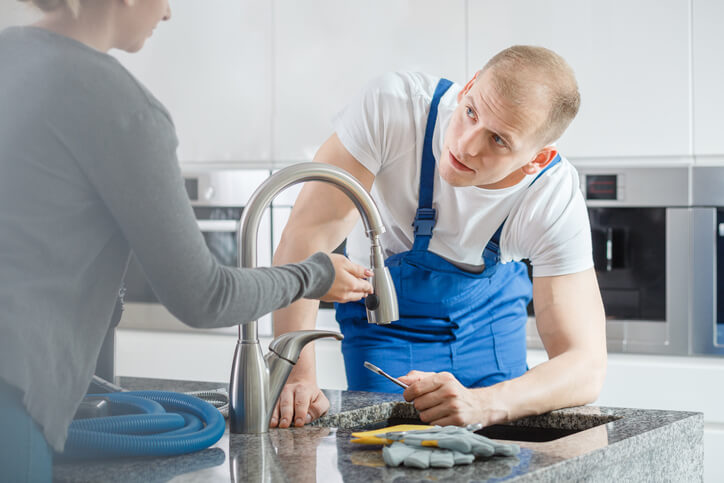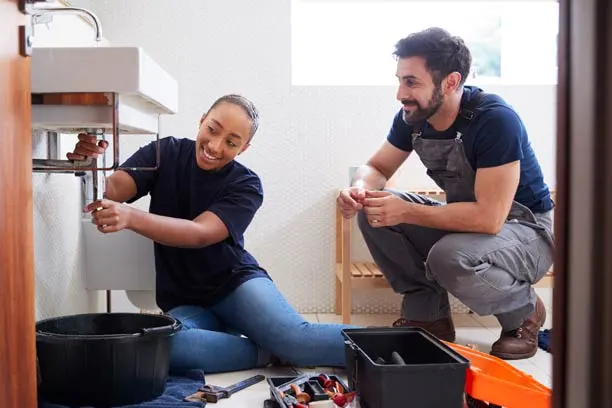Are you currently trying to find facts concerning When to DIY and When to Call a Professional Plumber?

Introduction
Plumbing problems can range from minor hassles to significant frustrations, often prompting home owners to decide in between dealing with the trouble themselves or hiring a specialist plumbing professional. Recognizing when to do it yourself and when to seek specialist aid can save time, cash, and avoid potential disasters. This article explores the variables to think about when making this crucial choice.
Advantages of DIY Plumbing
Taking on pipes jobs yourself can be satisfying in numerous ways, particularly for less complex jobs.
Complexity of Tasks
Some plumbing issues require specific expertise and tools past typical home owner capacities. Messing up complex troubles can bring about additional damages and costly fixings.
Safety Issues
Collaborating with pipes systems entails risks such as direct exposure to water damages, potential for electric risks, and managing tools improperly. Security precautions must be observed to avoid crashes and make certain effective repairs.
Indicators to Call an Expert Plumber
Identifying when a pipes concern surpasses DIY abilities is critical to stop getting worse problems.
Indicators of Facility Issues
Instances include:
Trigger specialist treatment is needed to deal with these issues properly and decrease damage.
DIY Plumbing Tips
For successful do it yourself plumbing, it's important to be prepared with the right tools and comply with proper treatments.
Fundamental Tools and Products
Secret tools for DIY plumbing:
Step-by-Step Guides
Clear instructions make certain safe and reliable do it yourself repair services:
Choosing the Correct Time to DIY
Figuring out when to take on pipes tasks yourself requires evaluating both the intricacy of the problem and personal comfort levels.
Evaluation List
Consider:
Cost Savings
Do it yourself plumbing tasks commonly conserve money by staying clear of specialist service charge. Jobs like repairing minor leaks, replacing faucets, or mounting brand-new showerheads are instances where house owners can handle repair work without employing a plumbing.
Skill Improvement
Engaging in do it yourself plumbing uses a possibility to find out and improve functional abilities. Fundamental tasks empower house owners to understand their pipes systems far better and obtain confidence in taking care of little repair services separately.
Risks of DIY Pipes
While DIY jobs offer benefits, particular risks must be carefully considered prior to attempting repair services.
When to Definitely Call an Expert
Certain circumstances require instant professional attention to stop extensive damages or safety dangers.
Emergency situation Situations
Examples include:
Finding and Working With a Professional Plumbing
Selecting a certified plumber makes sure trusted service and satisfaction in resolving pipes issues.
Requirements for Selection
Factors to take into consideration:
Cost Analysis: DIY vs. Specialist Providers
Comparing the financial ramifications of do it yourself efforts versus expert plumbing services helps in making informed choices.
Financial Considerations
Review:
Final thought
Deciding whether to do it yourself or call a professional plumber rests on comprehending the intricacy of pipes concerns and individual capacities. By considering the benefits and threats, house owners can make educated choices that advertise effective upkeep and guard their homes from plumbing catastrophes.
When to DIY and when to call a professional plumber
There are Australian laws and regulations that regulate plumbing work in Australia. This means that there are few home plumbing tasks that you can DIY. Besides, a lot can go wrong with DIY plumbing projects. However, there are also plumbing works that you can successfully DIY. Read on to know when to DIY and when to call a professional plumber.
You can learn more about the risks of DIY plumbing projects, projects requiring special caution, and illegal DIY plumbing works to avoid. This post concludes with the services of commercial plumbers and why getting expert help is essential.
Reasons to Attempt DIY Plumbing Projects
While it is often not advisable to perform DIY plumbing repairs, several pros of DIY plumbing projects can make them attractive.
Save costs
A significant reason for doing DIY plumbing jobs is to save costs. It is possible to save on labour charges and overall fees if you buy the needed tools and parts from local hardware stores and do the repairs yourself.
Gaining experience
You can gain some hands-on experience in basic plumbing repair if you watch online videos and attempt the repairs yourself.
Confidence boosting
You can boost your confidence and self-reliance skills by performing DIY plumbing repairs and installations yourself.
Risks of DIY Plumbing Projects
If something goes wrong with your DIY plumbing project, you may have unfavourable results that you may consider the cons of DIY plumbing.
For one, your home may get so extensively water-damaged that your home and contents insurance will not cover you. You will also have to spend more money to repair the water or sewage problem than you would otherwise spend for professional plumbing jobs. Besides, you may often spend more time on DIY plumbing work than an experienced plumber would spend. This is because you may not have the needed skill set. There are also related safety hazards and potential threats of DIY plumbing jobs that you may need to consider. Plumbing Issues You Can Fix Yourself
You can attempt DIY plumbing for plumbing issues such as replacing tap washers, installing shower heads or performing minor tap leak repairs. However, it would help if you invited licensed plumbers to fix complex leaking showers, effectively deal with blocked drains, or repair hot water systems. This is the best way to ensure these plumbing issues are correctly fixed, and the project is insured.
Fixing clogged or blocked drains
You may have clogged drains or need help with slow-draining showers. These are tasks that you can resolve yourself using several options. To fix blocked drains, you may use baking soda, plungers, or wire hangers. Meanwhile, you can take the preventive measure of installing filtration systems such as drain filters to help prevent drain clogs.
New faucet installations
It is possible to install a new faucet yourself. You would have to turn off the hot and cold water valves. Then, you can remove and fix the old faucet and replace it with the new one.
Leaky faucet repairs
While leaky faucet repairs are more technical than installations, you can also take some steps to fix them. Turning off water valves is the first step in draining water from plumbing systems. Next, you can use a washcloth to cover the drain and remove the decorative handles.
This will allow enough room to unscrew the nuts that attach the faucet handle to the stem. Your final step is to take out and replace the old washers and O-rings with the new duplicates.
Fixing running toilets
An occasional DIY solution for running toilets is to restore the flapper in the tank to its proper place.
Burst pipes
You may have issues with your exterior plumbing fixtures. It may simply be that your inbound or outbound pipes have worn out, or you may have burst pipes due to flooding or large tree roots.
You may also have frozen pipes. These are all instances when you need to call a professional plumber. They will perform pipe inspections to locate the problem and implement solutions such as pipe relining.
Interior plumbing repairs
It's usually time to call a competent plumber if you want to do plumbing repair work on floors, ceilings, or the walls of your building. They can also help you fix faulty showers and sinks.
Plumbing renovation
Major renovation projects or plumbing jobs such as bathroom remodelling and bathroom renovations require the services of a professional plumber. Likewise, you need a professional plumber to fix your kitchen sink or plumbing. They can help you get the required plumbing permits. At the same time, they know what building codes apply to such renovation projects.

Hopefully you enjoyed our section about When to DIY and When to Call in the Plumbing Pros. Thanks so much for finding the time to browse our post. Be sure to take the time to distribute this blog posting if you enjoyed reading it. Thanks so much for taking the time to read it.
Order Repair